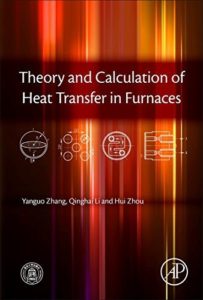Theory and Calculation of Heat Transfer in Furnaces 2016
Theory and Calculation of Heat Transfer in Furnaces 2016
Theory and Calculation of Heat Transfer in Furnaces 2016 Book Discuss Furnace technology Which is very commonly employed, industrially and in the home. The fuels available for furnaces include coal, oil, gas, and other combustible materials. More than one half of the energy consumed by humans comes from fossil fuel and biomass combustion; other energy sources include hydraulic, nuclear, wind, and solar power. All the thermal energy created by combustion is the result of a burning reaction between the furnace and combustible material, which takes place in its boiler or stove. The processes that occur in a furnace include not only combustion, but also flow, heat transfer, and mass transition. Heat transfer is the most important process in the furnace, and the focus of this book.
Heat transfer, one of the primary applications of thermal physics, covers heat conduction, convection, and radiation. Comprehensive understanding (and successful manipulation) of heat transfer is crucial for power engineering—including, of course, furnace engineering. The furnace is a reactor for combus-tion, in which the temperature is far higher than ambient, thus radiation is the dominant mode of heat transfer. The majority of this book concerns the behav-ior and principles of radiation heat transfer in furnaces.
You can also Read Heat Exchangers Selection, Rating, and Thermal Design
Theory and Calculation of Heat Transfer in Furnaces 2016 Content
- Theoretical Foundation and Basic Properties of Thermal Radiation
![Calculation of Heat Transfer in Furnaces]()
- Thermal Radiation Theory—Planck’s Law
- Emissive Power and Radiation Characteristics
- Basic Laws of Thermal Radiation
- Radiativity of Solid Surfaces
- Thermal Radiation Energy
- Radiative Geometric Configuration Factors
- Simplified Treatment of Radiative Heat Exchange in Engineering Calculations
Energy, communication, and material are basic elements which push modern society forward in the processes of industrialization, electrification, and information development. All devices related to combustion (including not only power plant boilers, turbines, and engines, but several other industry boilers and stoves) must satisfy environ-mental protection and economic demands.


Comments are closed.